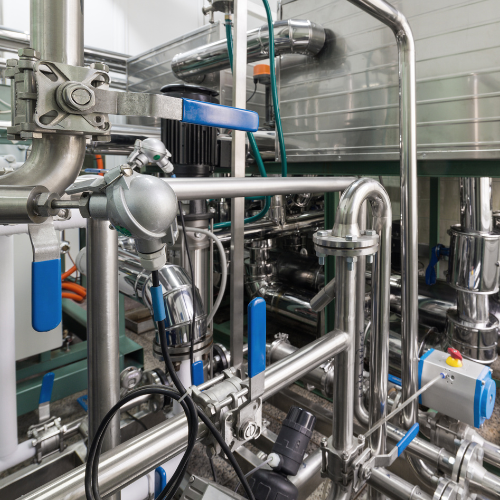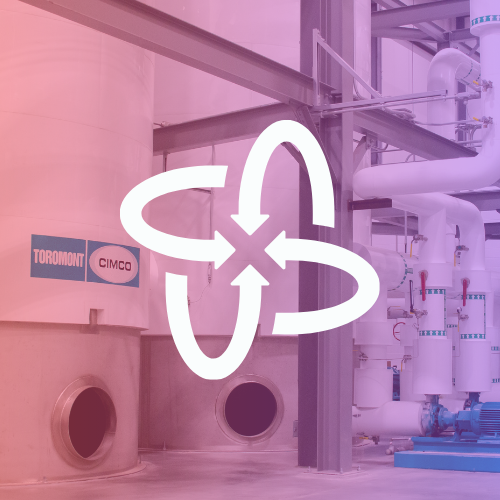Natural Refrigerant heat pumps for district heating and cooling
District heating and cooling, and heat pumps play a significant role in energy systems. Heat pumps are expected to become more prevalent in district heating systems since they can deliver heat with higher efficiency and connect the heating and electricity sectors by using renewable energy sources.
Heat pumps are powered by refrigerants and the refrigerants themselves contribute to greenhouse gas emissions. Within the refrigerant industry, there is a push towards phasing out refrigerants that contribute to global warming and an inclination toward natural refrigerants. Natural or non-synthetic refrigerants, like Ammonia and CO2, are naturally occurring and can be found in nature. The metric used to measure the global warming effect of refrigerants is called Global Warming Potential (GWP). The GWP of natural refrigerants ranges from 1 to 0, while that of non-natural/synthetic refrigerants is in the thousands. At CIMCO, we design and install heat pumps that use natural refrigerants, namely ammonia and CO2.
A nature-based solution
A heat pump that runs on natural refrigerant is a future-proof, regulatory-compliant solution. Natural refrigerants such as ammonia (R717) and CO2 (R744) are nature-based solutions with zero or near zero ozone depletion and global warming potential.
The main energy source for a heat pump is electricity, and when electricity is generated from renewable sources and a heat pump running on natural refrigerants is used, communities have an absolute opportunity to decarbonize buildings and reduce greenhouse gas emissions.
- CIMCO heat pumps capture, upgrade, and reject heat using electricity and do not burn natural gas which means no direct greenhouse gas emissions.
- When powered by a natural refrigerant like Ammonia or CO2, it becomes an absolute future-proof system since both these refrigerants have no negative impact on the environment and will never be phased out by governments.
- Heat pumps can capture heat from multiple sources, including process waste heat, and turn it into usable heat.
- As there is no combustion process, it reduces the risk of carbon monoxide leaks.
Key Facts about natural refrigerant heat pumps:

Energy Efficient
For every kW of electricity consumed by a heat pump, about 3kW is moved from the heat pump source, for a total of 4kW of thermal energy. That's 400% heat, or 4 times more heat produced than the energy consumed. Traditional heating technology using gas produces less than 100%.
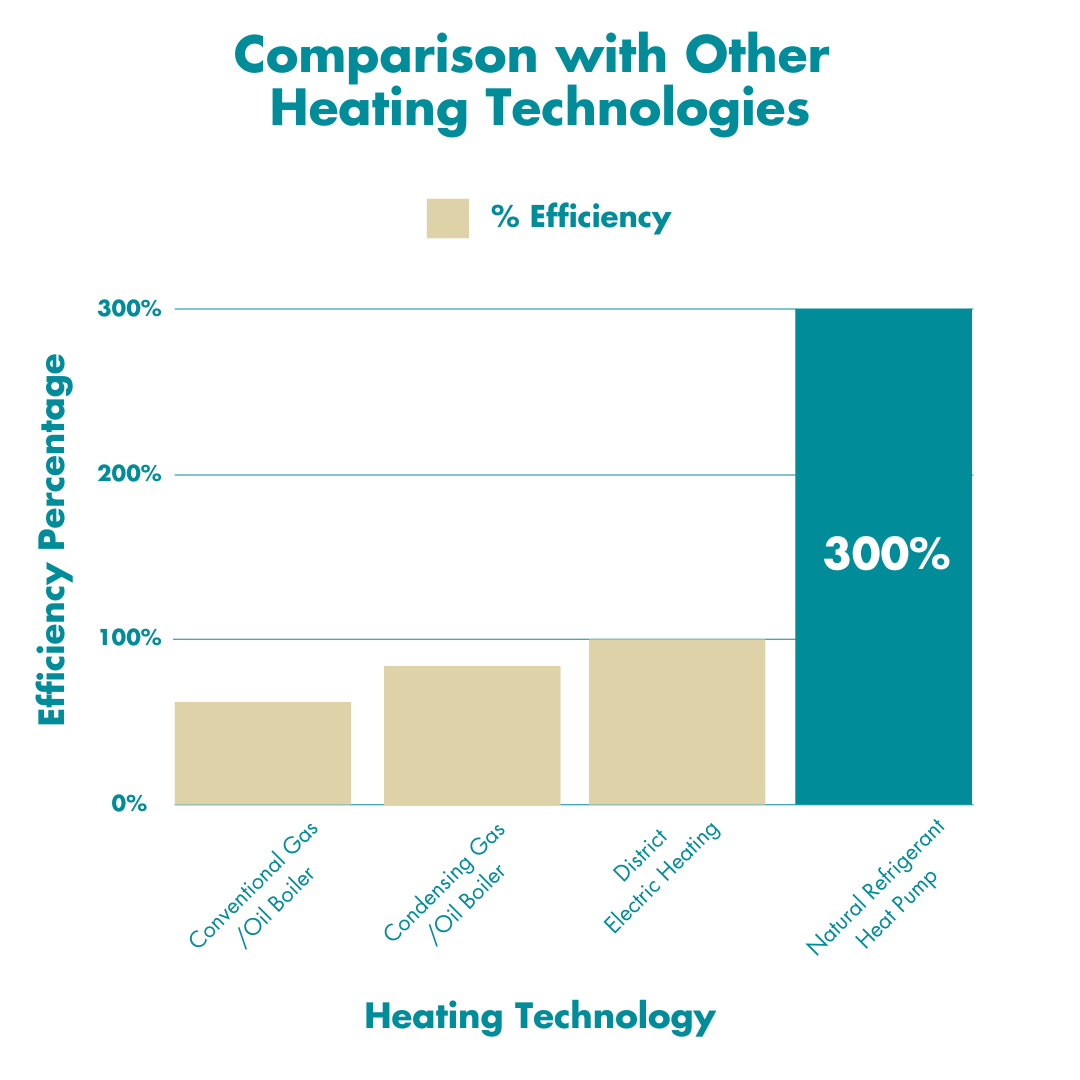

Free Heat Is The Best Heat
A heat pump captures waste heat from multiple sources and converts it into usable heat. This ensures that the waste heat is not discharged into the atmosphere and reduces the need for any additional energy in district heating and cooling.

Reliable and Safe
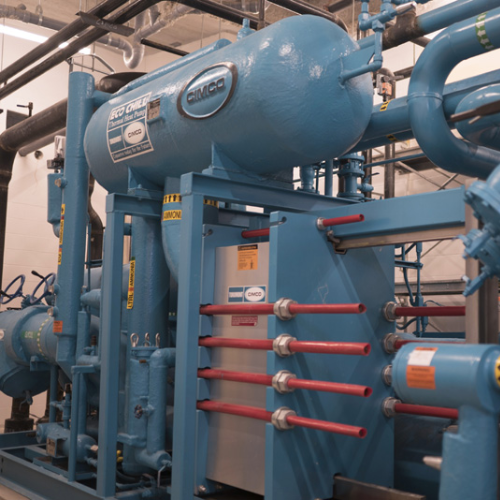
Case Study: Ontario’s most forward city phases out natural gas boilers
Guided by its vision to build healthy and sustainable communities, a prominent city in Ontario is actively working to decarbonize buildings through its District Energy System. CIMCO’s 4 MW Ammonia Heat Pump is fueling this work by replacing natural gas boilers and managing heating and cooling needs with clean energy.
The system covers an area of over 50 kilometers of residential, commercial, and industrial buildings. The heat pump will capture the waste heat generated from the continuous supply of chilled water to data centers and hospitals, and elevate its temperatures before feeding it to the community heating loop.
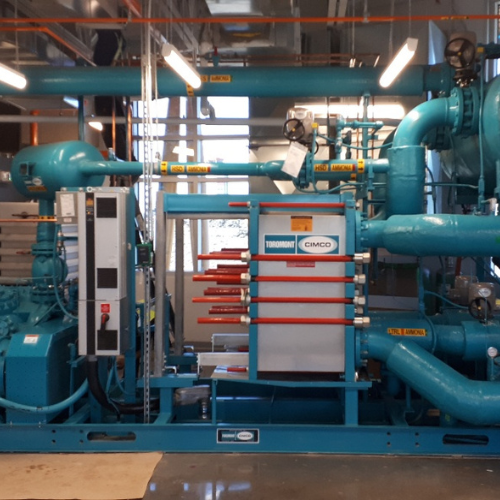
Case Study: Blatchford, Edmonton: Creating a Carbon-neutral Community
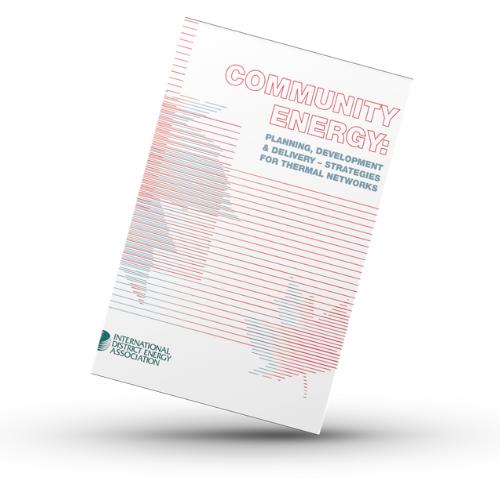
Community Energy: Planning, Development & Delivery
The guidebook by International District Energy Association provides an overview of the local energy project development process, in a form that is accessible to lay readers, to assist them in making informed decisions on the analysis, planning, development and delivery of district energy systems. IDEA engaged UK-based district energy specialist Michael King, author of the UK guidebook by the same name, to revise Community Energy: Planning, Development and Delivery for the U.S. market to reflect relevant national energy and environmental policies and incorporate current U.S. market conditions and policy drivers on a federal, state and local level.


